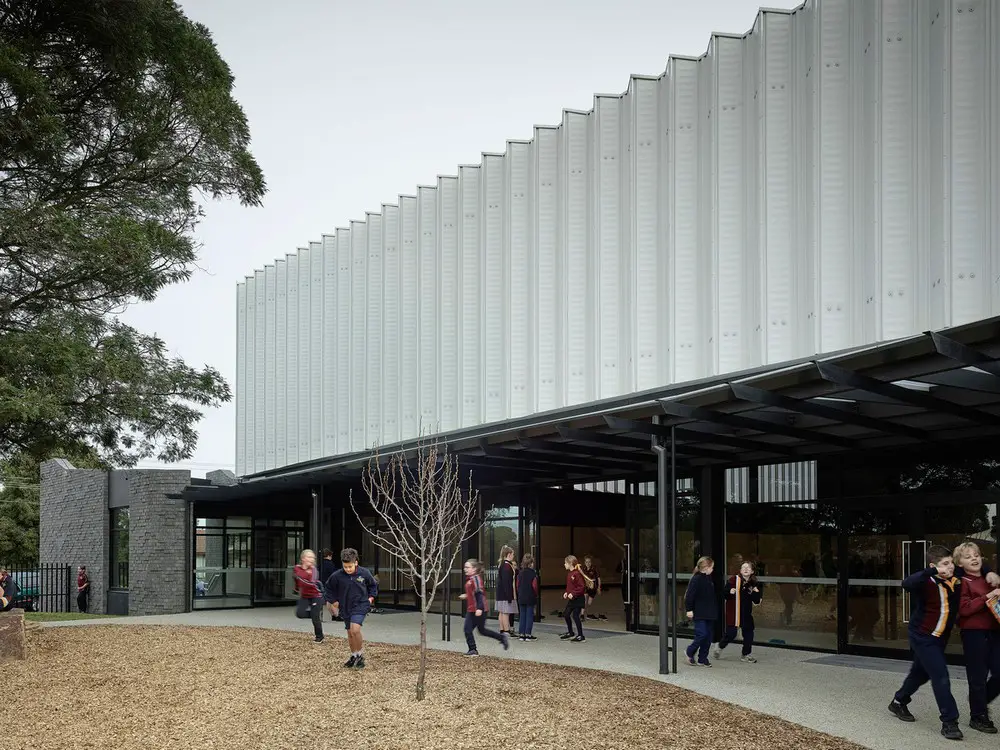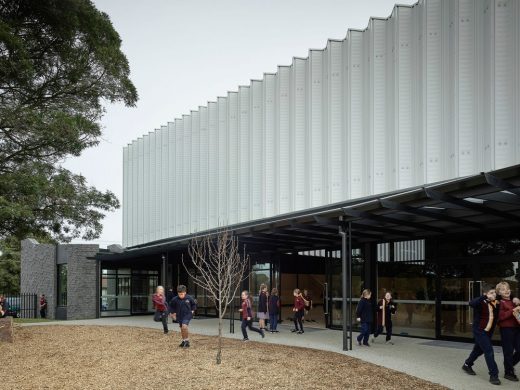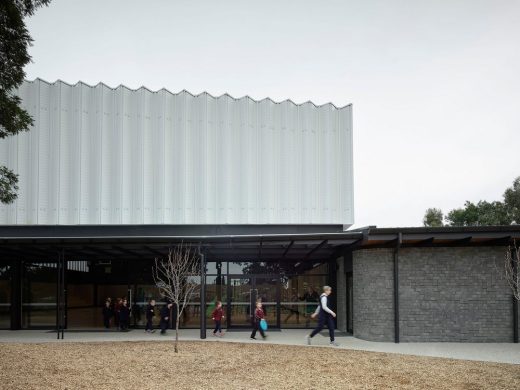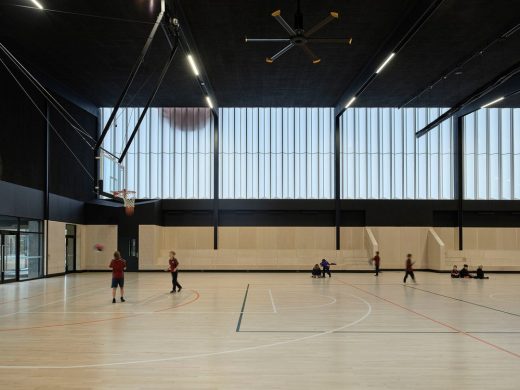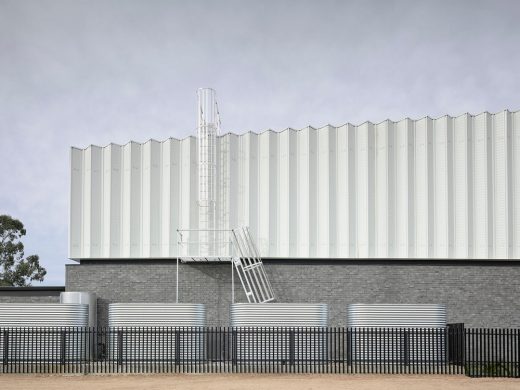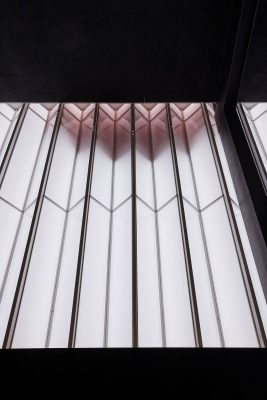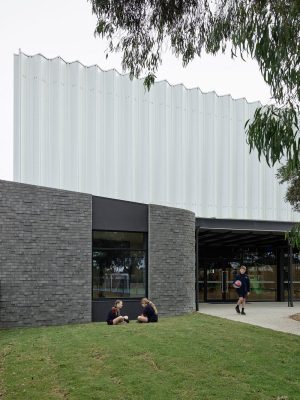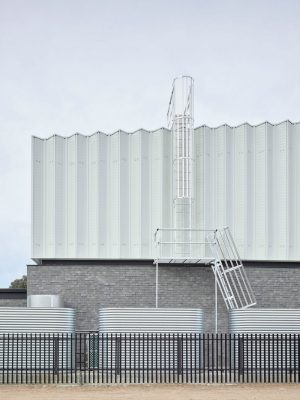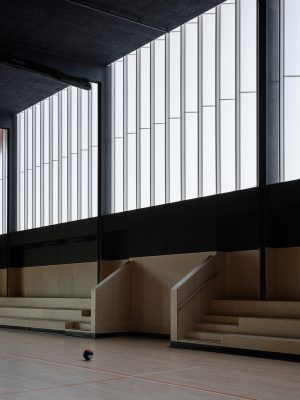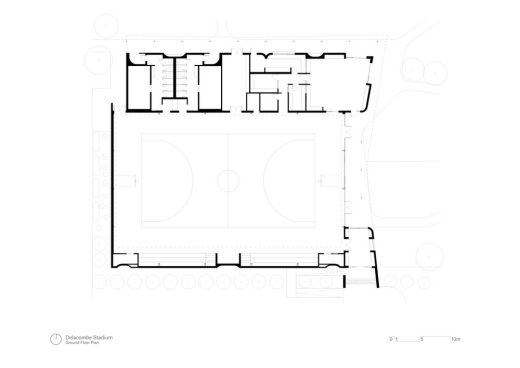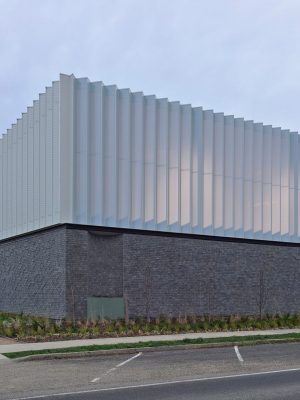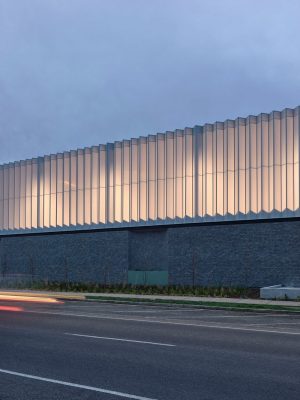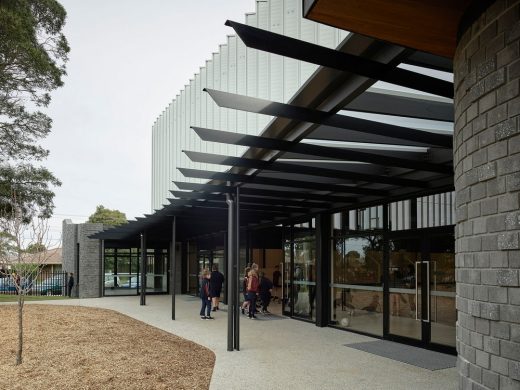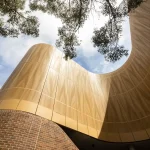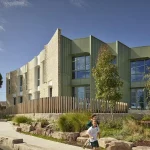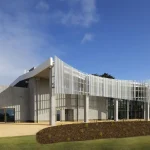Delacombe Stadium, Ballarat, Victoria Real Estate Building, Australian Modern Architecture Photos
Delacombe Stadium in Ballarat
5 Oct 2021
Architecture: Kosloff Architecture
Location: Ballarat, Central Highlands, Victoria, Australia
Delacombe Stadium
Delacombe Stadium acts as a ‘front door’ for Delacombe Primary School, the new Stadium provides a contemporary and high quality dedicated facility for competitive sports standards. The design considers the importance of connection, with a shift from a community urban frontage to a smaller campus scale, allowing for a transitions that responds proportionally to its contrasting environments.
The Stadium has a high focus on sustainability, using simple and passive design solutions to minimise the building’s environmental impact, with natural ventilation, light and low impact materials. Internally it provides a new competition grade indoor sporting facility designed for both the school and community to use. As well as supporting after hours and holiday care programs, it is now being utilised by a diverse range of local sporting and community groups. The project includes a competition grade netball/basketball show court, amenities and changeroom facilities, storage, office, multipurpose/canteen spaces along with significant upgrades and improvements to the school street interface and adjacent play spaces.
What was the brief?
Delacombe Primary School is located in the growth corridor of Ballarat West with enrolments expected to increase. Previously the school did not have a dedicated Gymnasium facility and had partial use of the adjacent Doug Dean facility which was not at competition standard, and provided poor internal comfort levels due to a lack of insulation and ventilation. In addition, the school had identified the need for a flexible multipurpose room designed into the Gymnasium, nominated as a school funded item. Detailed elements of the brief called for an indoor facility that would provide the maximum use potential from a wide range of users including school students and staff, local basketball and netball clubs as well as cricket/rugby/football clubs that would be seeking to use the amenities as an extension of the neighbouring community sports field. Additional briefing items were for the project to provide a high quality internal series of spaces that would be welcoming and warm, and appropriate for a range of activities beyond sports.
What were the key challenges?
Careful consideration needed to be given during the early design stages as to the scale of a building of this size relative to the students, given its’ adjacency to a number of key play spaces. Indoor sporting facilities can also be a challenging environment to manage acoustically and also from an environmental amenity perspective – for cost reasons they often have uninsulated walls and ‘aurally reflective’ surfaces that can make them unpleasant to occupy for some modes of use
What were the solutions?
The siting and planning of the building arranges the much larger internal court volume facing the street, thus allowing for a student-scaled wing of lower height spaces to the north and east. These lower height spaces allow for direct amenities access from the outside, canteen access and strong visual links between the internal spaces and outdoor areas allowing strong passive surveillance systems to operate. The project has been designed with full wall and ceiling thermal insulation as well as acoustically absorbing internal wall and ceiling linings which reduce noise transmission and reverberation in the space. The built outcome is a much calmer and quieter environment to occupy, with school assemblies, community events, presentations and a wide range of other learning activities easily accommodated.
What are the sustainability features?
Passive design strategies have been used to allow the Gymnasium to operate comfortably without the need for extensive airconditioning or heating. Insulation is provided not only to the roof, but also to the full extents of the walls, and rigid insulation is also provided below ground slab. As Ballarat can be an environment of extremes, this insulative ‘coat’ allows the internal spaces to remain temperate during sub zero temperatures, by providing a base stable internal temperature. Natural air is brought in through low level fans, with hot air exhausted at the high point of the roof. Two large high level industrial fans provide air circulation and an evaporative cooling effect for sports players.
These are virtually tuned to provide optimal air flow in warmer weather, increasing comfort in hot weather conditions and allowing extended usage and curriculum delivery beyond sports activities. Southern diffuse natural light allows for reduced glare amenity, and reduces the requirement for artificial lighting, whilst a deep undercover ‘eave’ surrounds the northern and eastern aspects, protecting from inclement weather and also reducing heat load in winter. All external glazing is high performance double glazing to allow the building higher levels of internal comfort without the need for mechanically augmented systems and fresh air is controlled by ‘smart’ C02 sensors distributed throughout the internal spaces, which continually monitor for occupancy levels and introduce fresh air as required automatically. Rainwater is also being harvested from the new roof for use in irrigating school grounds.
Ballarat East House, Victoria – Building Information
Designers: Kosloff Architecture
Project size: 1480 sqm
Site size: 32600 sqm
Completion date: 2021
Building levels: 1
Photography: Derek Swalwell
Delacombe Stadium, Ballarat images / information received 051021
Location: Ballarat, Victoria, Australia
Melbourne Architecture
Contemporary Melbourne Architecture
New Melbourne Buildings : current, chronological list
Melbourne Architectural Tours by e-architect
POP-UP House, Essendon, Victoria
Architects: FIGR Architecture Studio
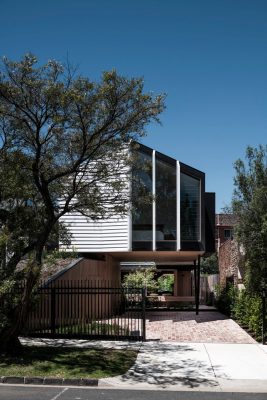
photo © Tom Blachford
POP-UP House, Essendon
Over Pool House, Hawthorn, Victoria
Design: Jane Riddell Architects
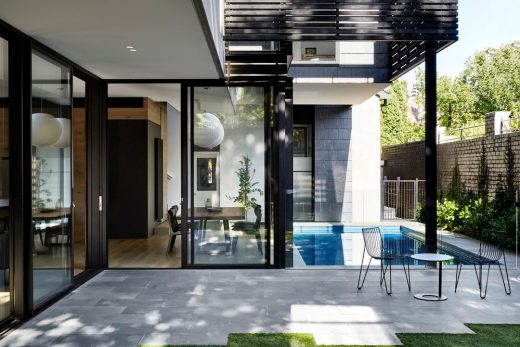
photograph : Tess Kelly
New House in Hawthorn
Barwon Heads
Architecture: Adam Kane Architects
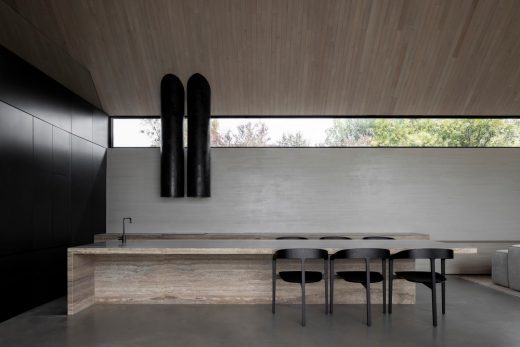
photo : Timothy Kaye
Barwon Heads House, Victoria
Architecture in Australia
Australian Architectural Projects
Sydney Architect Studios – design studio listings on e-architect
Comments / photos for the Delacombe Stadium, BallaratVictoria page welcome

